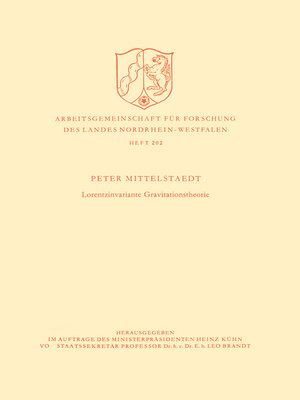Lorentzinvariante Gravitationstheorie
ebook ∣ Arbeitsgemeinschaft für Forschung des Landes Nordrhein-Westfalen
By Peter Mittelstaedt

Sign up to save your library
With an OverDrive account, you can save your favorite libraries for at-a-glance information about availability. Find out more about OverDrive accounts.
Find this title in Libby, the library reading app by OverDrive.



Search for a digital library with this title
Title found at these libraries:
| Library Name | Distance |
|---|---|
| Loading... |
The theory of gravitation, whieh has been formulated in the framework of Einstein's General Theory of Relativity, has an exceptional position in respect to modern neId theories, since it is formulated in a Riemannian space, which is determined by the motion of mass points and light rays. The attempt to construct a theory of gravitation on the same principles on which usually neId theories are based leads to a symmetrie tensor neId. Using the equations of motion for mass points and light rays, whieh serve also as measuring deviees for space-time intervals, the theory can be re formulated into a theory which contains exclusiveIy obserwable quantities. This theory is identical with Einstein's theory of gravitation. The possibility to interprete Einstein's theory of gravitation either as a theory in a Riemannian space or as a Lorentz-invariant neid theory in the Euklidian space, exists as weIl for local problems as for a few global pro blems, which are connected with the structure of the universe. Literatur [1] Heckmann, 0., und E. Schückung, in: Handbuch der Physik, Bd. LIII (S. Flügge ed.), S. 489, Berlin-Göttingen-Heidelberg, Springer 1959. [2] Heckmann, 0., und E. Schückung, Z. Astrophys. 38, 95 (1955); 40, 81 (1961). [3] Marzke, R. P., und]. A. Wheeler, in: Chiu, H. Y., und W. Hoffmann, Gravitation and relativity, p. 40, New York, Benjamin 1964. [4] Kundt, W., und B. Hofmann, in: Recent developments in general relativity, p. 303, Warschau: PWN 1962.







